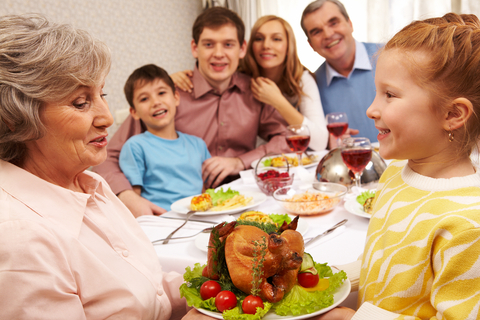
When I see my children in unguarded moments thanking one another for the help or kindness they give one another, I am incredibly grateful myself to be able to live in a positive environment where the people most important to me genuinely care for one another.
I didn’t actually witness the specific moment I am thinking of. About a week ago, my children were both so tired and whiny that I asked how they had slept the night before.
“I slept OK,” my daughter told me, “but I didn’t get to sleep until late. J was sad and couldn’t sleep, so I read him stories.”
My poor, tired son just nodded. They didn’t want to wake me or my husband, so she took care of her brother as best she knew how. She did for him the thing that comforts her, and it worked. He had be so tired but sleepless that he was crying, and she calmed him with stories.
How can we ensure that our children are thankful? I don’t think we necessarily can, but I have a few ideas how we might best set the stage for our children’s genuine gratitude.
First Step in Gratitude Is Giving
Before we ask children to focus on what they get, we need to help them focus on giving. For example, I think that my daughter’s desire to give helps her to be a thankful person.
Learning to be thankful is easier if we understand the flow of give and thanks from both directions: as the person who is thankful and the child who experiences others’ thanks for what they have done.
Awareness of Choice
Another important key to being thankful is understanding that others don’t have to give what they do. They choose to give.
If a person feel entitled to what they get, to what others do for them, they don’t necessarily see actions as gifts freely given. To raise a thankful child, help them recognize the choice in giving. Make sure that neither side of the equation—the giving or the thanks—is forced. If they truly understand their own choice in giving, they may be better able to understand that others also give by choice.
Receiving Specific Thanks Feels Good
When a child has experience in giving, they are more likely to know that doing good for others, even giving the smallest kindness, feels good. When someone thanks them for doing good, they get a positive feeling from the giving and the receiving.
A child can begin to see that they have a gift to give with their own thanks. Giving thanks is the gift of acknowledgment.
Model Thanks
If you model the thankful behavior you want to see in your children, they will develop a positive focus on giving and receiving.
Give them opportunities to say that they are thankful. Participate in rituals of gratitude. These could be as simple as going around the table at Thanksgiving and recognizing what each person is thankful for in their life, in the harvest, in their caring circle of family and friends, or on any level. The habit of stopping to recognize what one is thankful for can become ingrained.
Being thankful isn’t necessarily a comparison with others, as in “I’m thankful that we have a bountiful harvest this year because not everyone does.” Statements of thanks are more meaningful when they acknowledge the giving of others, as in “I’m thankful for the corn and potatoes on the table in front of us because my mother carefully tended them in the garden this year.” The more they are exposed to the specific and genuine acknowledgments for what they do, they more likely they will acknowledge and give thanks to others.
It’s the Giving
Raise thankful children by helping them focus on giving, both giving kindness and giving thanks for the kindness of others. When this kind of positive giving becomes a habit, there won’t really be so much distinction between the give and take since it can all be framed as giving.
To all of our Canadian readers, we wish you and your family a very happy and bountiful Thanksgiving.
Image © Dmitriy Shironosov | Dreamstime.com
